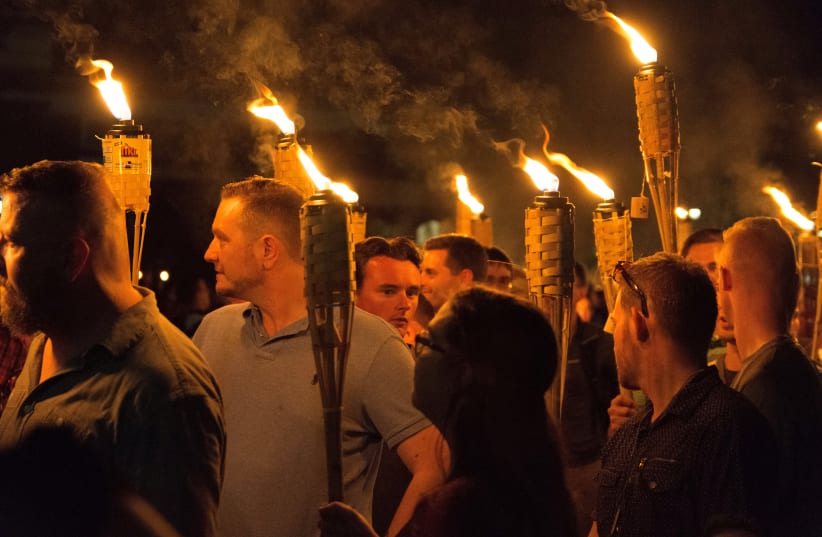These photos make the rounds on social media, are shared widely on Twitter and pop up on Facebook feeds around the world. And, unsurprisingly, most of the protestors in the pictures are eventually identified.If you recognize any of the Nazis marching in #Charlottesville, send me their names/profiles and I'll make them famous #GoodNightAltRight pic.twitter.com/2tA9xliFVU
— Yes, You're Racist (@YesYoureRacist) August 12, 2017
This angry young man is Peter Cvjetanovic, a student at @unevadareno pic.twitter.com/7rLGJkcT3o
— Yes, You're Racist (@YesYoureRacist) August 12, 2017
The consequences of this outing on social media can be dire. The first young man exposed by @YesYoureRacist was fired shortly after. Not only did the tweet identify him, it also named his hometown and workplace.The company, top dog in Berkeley, California, confirmed that they had terminated his employment after learning that he was in attendance in Charlottesville.These two torchbearers are Ryan Martin (L) and Jacob Dix (R) of Centerville, Ohio #ExposeTheAltRight #Charlottesville pic.twitter.com/9AzH3qlAfM
— Yes, You're Racist (@YesYoureRacist) August 13, 2017
The hot dog restaurant even posted a sign on the door confirming that the man no longer works there. "The actions of those in Charlottesville are not supported by top dog," the sign reads.Simply identifying a person in a photograph does not violate Twitter's terms of use, although publishing the individual's private information is not allowed. As long as these Twitter users are careful not to reveal too much, they seem able to continue sharing and identifying public photographs.The idea of using social media as a tool to identify and call out individuals is not new.Last year, Brock Turner's notorious case sparked anger when the 20-year old, convicted of rape, was sentenced to only six months in prison. The light sentence angered many. One response: sharing a photo of Turner with the words "I'm a rapist" printed in large letters. The idea behind this social media attack was to sentence the young man to a life of recognition.Facebook eventually removed the photograph from several accounts.Police have also started using social media to identify suspects.In 2013 the FBI released low resolution photographs of the Boston Marathon bombing suspects on the internet. Social media users went wild, quickly identifying Dzhokhar Tsarnaev. However, the process turned into a sort of witch hunt, falsely identifying a missing Indian-American student as a suspect. His photo became infamous even though he had nothing to do with the attack.Social media can give people the ability to anonymously post content. However, it has also become a powerful tool to remove anonymity. If a person is caught on camera, it is reasonable to expect that he or she can be identified.UPDATE: Cole White, the first person I exposed, no longer has a job ♂️ #GoodNightColeWhite #ExposeTheAltRight #Charlottesville pic.twitter.com/sqxSXboKw6
— Yes, You're Racist (@YesYoureRacist) August 13, 2017
